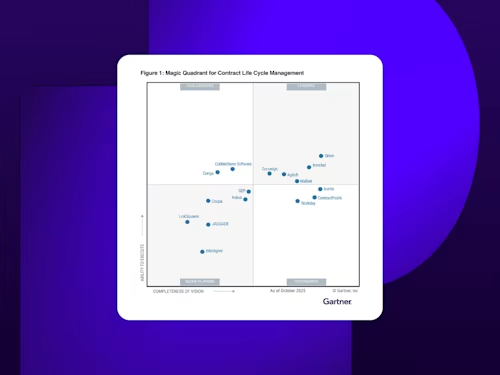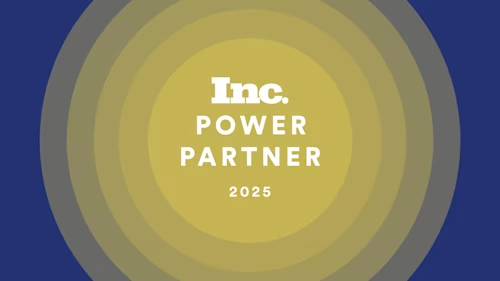
Creating Efficient and Effective Public Sector Agreements
Cumbersome agreement processes make it difficult for agencies to provide constituents with what they’ve come to expect: 24/7 self-serve, mobile-friendly, secure digital services. The FedRAMP and GovRAMP authorized Docusign IAM platform helps agencies easily create the agreements that define their relationships with the public they serve.

The public sector is an enormous service provider. Within the Federal government, over 430 agencies and sub-agencies provide information and services to more than 400 million individuals, organizations, and local governments.
For the government to act promptly and effectively, it requires accurate and comprehensive information, which can only be provided by well-designed agreements that are easy for constituents and employees to complete.
Creating agreements is not just a matter of administrative convenience—it’s critical to building a responsive and resilient government.
However, many traditional agreement creation processes are time-consuming, paper-intensive, error-prone, and costly. These cumbersome processes make it difficult for agencies to provide constituents with what they’ve come to expect: 24/7 self-serve, mobile-friendly, secure digital services like they use every day.
Thankfully, Intelligent Agreement Management (IAM) streamlines and automates agreement processes. The AI-powered Docusign IAM platform helps agencies easily create the agreements that define their relationships with the public they serve.
Understanding the importance of creating agreements in the public sector
Agreements are the foundation for a range of government services. They’re formal documentation of the commitments that any set of parties (e.g., a government body and its constituents) make to each other. For example, agreements include Memorandums of Understanding (MOU), vendor contracts, service agreements, grant applications, warrants, disability forms, enrollment forms, licenses, permits, and tax forms.
Agreements touch virtually every part of government. The most well-crafted agreements build and solidify public trust and ensure operational efficiency.
However, creating outstanding agreements comes with challenges. Lengthy drafting processes, a lack of standardization, and manual errors can slow down the creation of highly effective and critical agreements for the government.
Deloitte estimates that 25,000 hours are wasted annually creating agreements. This is due to what’s called the Agreement Trap, wherein outdated systems and processes trap valuable information inside static documents, costing organizations time, value, and opportunity.
Best practices for creating effective agreements
There are several ways for government agencies to break free of the Agreement Trap, specifically when creating agreements.
Standardization: The first step is for agencies to use standardized templates to ensure uniformity and compliance.
Clarity and precision: Agreement language must be clear and concise to avoid misunderstandings between all parties.
Stakeholder involvement: Ensure all relevant parties are involved early in the agreement drafting process.
Regular updates: All templates and boilerplate language need to be regularly updated to reflect current laws and policies.
Setting up agreements: Move beyond keeping the data in a static document; it should always drive the necessary follow-on actions.
The Docusign advantage in agreement creation
The FedRAMP and GovRAMP authorized Docusign IAM platform allows agencies to create agreements that are collaborative, automated, and integrated with all processes and systems through a variety of core capabilities:
Web Forms: Effortlessly gather data and dynamically populate agreements for an interactive, mobile-friendly, and intuitive form-filling experience.
Web Forms also offers conditional logic, which dynamically changes form fields based on inputs. It’s a no-code solution that enables public sector organizations to build forms easily. Field-level reporting and data visualizations enable dynamic data collection, allowing departments to unlock the data within agreements.
With our API availability, it’s also easy to connect agreement data captured in Web Forms with systems of record, enabling pre-filled forms and embedded forms.
Agreement Preparation: Easily leverage templates to generate custom, accurate, and professional-looking agreements in seconds, adding flexibility, speed, and compliance to your agreement process.
It’s also possible to send workflows faster by generating custom documents directly within Docusign eSignature without requiring coding. The eSignature API scales these efforts even further by automatically pulling data from an agency’s systems of record.
Agencies can adopt a single template for multiple uses with conditional logic through a simple deployment. For example, once a signer’s geographical location populates into a template, eSignature can respond to that information by including country-specific language in the agreement.
Thanks to each agreement being personalized, it’s possible to elevate the user experience with agreements that are properly formatted, easy to read, and correctly branded.
Compliance is always a challenge in government, and now agencies can create documents with consistent language and appearance, minimizing ad hoc copy and simplifying compliance with governmental standards.
CLM: Automatically create agreements from a pre-approved library of language from your legal department. Leverage fall-back clauses during negotiations to limit risk when your counterparty won’t accept your preferred terms.
Today’s constituents have heightened expectations regarding their interactions with the government. A vital step in meeting these expectations is creating effective interactions that are easy to navigate.
Thankfully, the IAM platform can help any public sector agency easily generate and standardize agreements to streamline workflows, reduce errors, and ultimately accelerate the mission. Read part two of this three-part blog series, where we highlight the importance of the “commit” or signature phase of the agreement process for the public sector.
Related posts
Docusign IAM is the agreement platform your business needs




